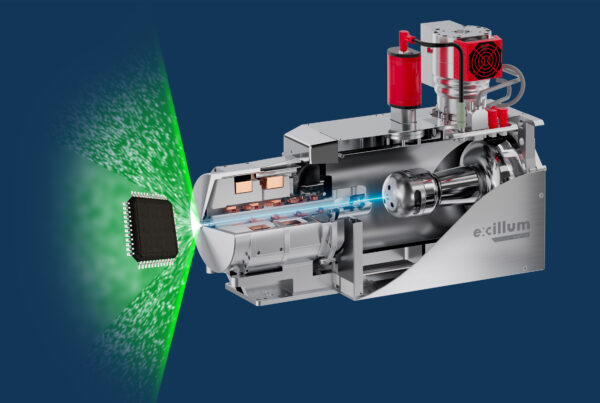Marina Eckermann, Mareike Töpperwien, Anna-Lena Robisch, Franziska van der Meer, Christine Stadelmann, Tim Salditt
Phase-contrast tomography has shown its potential as a new 3-D virtual histology method at laboratory sources, with down to sub-cellular resolution. The group headed by Professor Tim Salditt at University of Göttingen has extended the application to unstained neuronal tissue investigation, with a laboratory cone-beam geometry NanoCT system based on the Excillum NanoTube N1 60 kV. Thanks to the state-of-art round source size and the dedicated design of emission front from the NanoTube, the high spatial coherence for pronounced phase-contrast can be achieved at a compact setup, and moreover, the high geometric magnification without significant source blurring, which has the scalability of integrating a pixel detector. Compared to the tomographic performance on the same unstained human brain tissue of a high resolution microCT setup with rotating anode X-ray source, the NanoTube-based NanoCT setup achieved comparable to slightly superior image quality, i.e. higher SNR for different anatomical structures, lower power assumption and shorter exposure time. Additionally, the flexibility of the NanoCT system for different requirements, i.e. phase-contrast, resolution, field of view, has been demonstrated, which is based on the tunable and well-known NanoTube configurations, such as source size and flux.
The future system performance in scan time and throughput can be improved by upgrading to the higher power Excillum NanoTube N2, which provides at least a 3x higher flux at small source size than the NanoTube N1, and the replacement by a higher efficiency pixel detector. Hence, it is promising to bring virtual 3-D histology for clinical practice in neuropathology.



